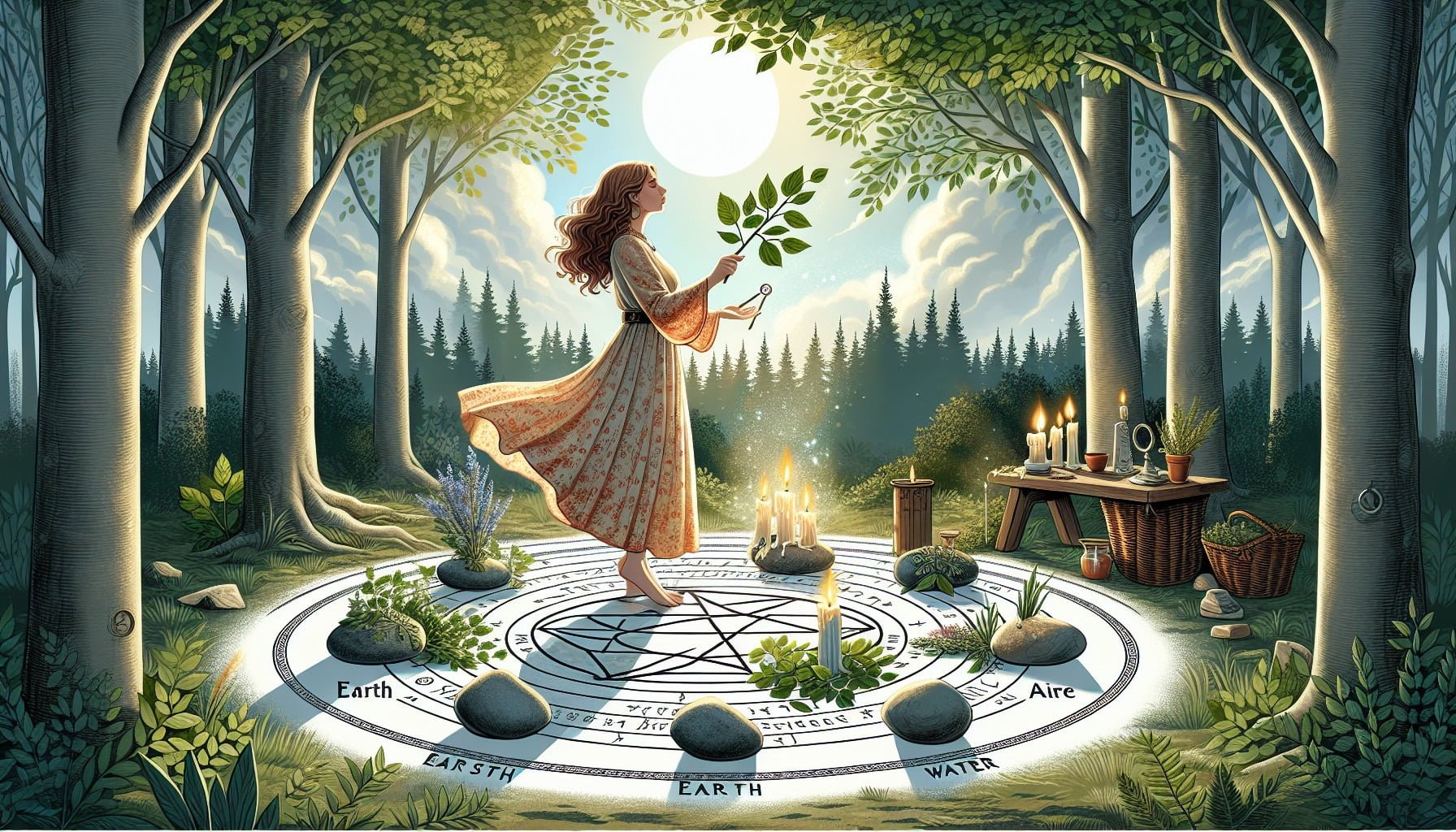Enshrouded in a labyrinth of mystery and intrigue, the realm of paganism and its myriad symbols beckon the curious mind. These intricacies are not merely fanciful designs or esoteric embellishments; they are the pith of a rich, vibrant tapestry woven of ancient and contemporary beliefs. They serve as reminders of the myriad forces that imbue the world around us with life, energy, and magic. Below, we delve into a world of wisdom encapsulated in common pagan symbols that carry imprinted messages from our natural world: symbols like the Pentacle, the Triple Moon, and the Spiral.
Perhaps the most emblematic symbol of paganism, the Pentacle, is a five-pointed star encased within a circle. At a glance, it may strike as eerie or sinister within the unfamiliar mind, largely due to its misguided portrayal in popular culture. However, the reality of this symbol invites a beautiful interpretation borne of harmony and symbolism. The five points of a Pentacle represent the five elements – Earth, Air, Fire, Water, and the all-encompassing Spirit. These elements are enclosed within a circle that symbolizes eternity and continuity, emphasizing the interconnection and interdependency of all elements in the universal cycle of existence.
Each element resonates with a unique aspect of life. Earth represents physical existence, stability, and grounding; Air symbolizes thought, wisdom, and the breath of life; Fire stands for transformation, will, and passion; Water signifies emotions, intuition, and the flow of life. At the top, the Spirit point represents the divine essence binding these elements, the transitory realm of dreams, the cosmos, and realms beyond sensory perception. So, as you can see, far from being a sinister sign, the Pentacle is a veneration of life in all its forms and states.
A symbol rich in feminine energy and recognized for its link to goddess worship is the Triple Moon. This potent symbol glorifies the aspects of the goddess – Maiden, Mother, and Crone. These three stages are paralleled by the moon’s waxing, full, and waning phases. The Maiden embodies new beginnings, youthful endeavours, and excitement; the Mother symbolizes fertility, stability, and power; the Crone encapsulates wisdom, repose, and eventual death. So, the Triple Moon symbol is a celebration of the cyclical nature of life, the beauty in every stage, and the divine transition therein.
The waxing moon phase represents the Maiden, the birth of new ideas and inception of growth. The full moon symbolizes the Mother, embodying fulfillment, realization, and care. Finally, the waning phase signifies the Crone touching on deep wisdom, completion, and mortality. The Triple Moon is thus a silent hymn to life’s dynamism and the empowering divinity of the feminine aspect in its entirety.
Another enchanting symbol that gracefully swirls its way into Pagan iconography is the Spiral. The Spiral – an ancient symbol inscribed by prehistoric man into rocks and cavern walls – represents the continuity of life, a journey of growth, expansion, returning to the point of origin, and yet moving beyond. With each curve, the Spiral teaches that life, in its essence, is a series of spiraling journeys – each lap a lesson learned, each return a familiarity enriched with new experiences, and each stride forward a step closer to the final culmination. It is the dance of creation and destruction, forever entwining in the cosmic ballet.
The rightward spiral (Deosil) symbolizes the Sun’s path and resurrection and represents clock-wise motion connected with positive magics and benign workings. Conversely, the leftward or Counter-sunward spiral (Widdershins) symbolizes the moon-path, introspection, and the uncloaking of deeper wisdom and change that sometimes occur in the twilight zones of our consciousness. Such is the beautiful dynamism of the Spiral – a symbol of life’s continuum, flowing and ebbing, yet ever revolving in its destined path.
In retrospect, the symbols of Paganism offer profound perspectives on life’s various shades. Embracing these symbols is to honor the sublime intensity that every element, every phase, and every spiral turn contributes to the grand spectacle we know as existence. The Pentacle, the Triple Moon, and the Spiral are just three examples that barely scratch the surface of the rich world of pagan symbolism. Each symbol depicts a story, a belief and is a testament to the vivid tapestry of human perception regarding life, nature, and the cosmos. It widens our spectrum of understanding and appreciation towards ancient wisdom that still resonates in the contemporary world – reminding us of the magic within and around us. |
Lilly Dupres
Owner & AuthorLilly Dupres, a lifelong practitioner of paganism, established Define Pagan to offer a clear definition of paganism and challenge misconceptions surrounding modern pagan lifestyles.



















